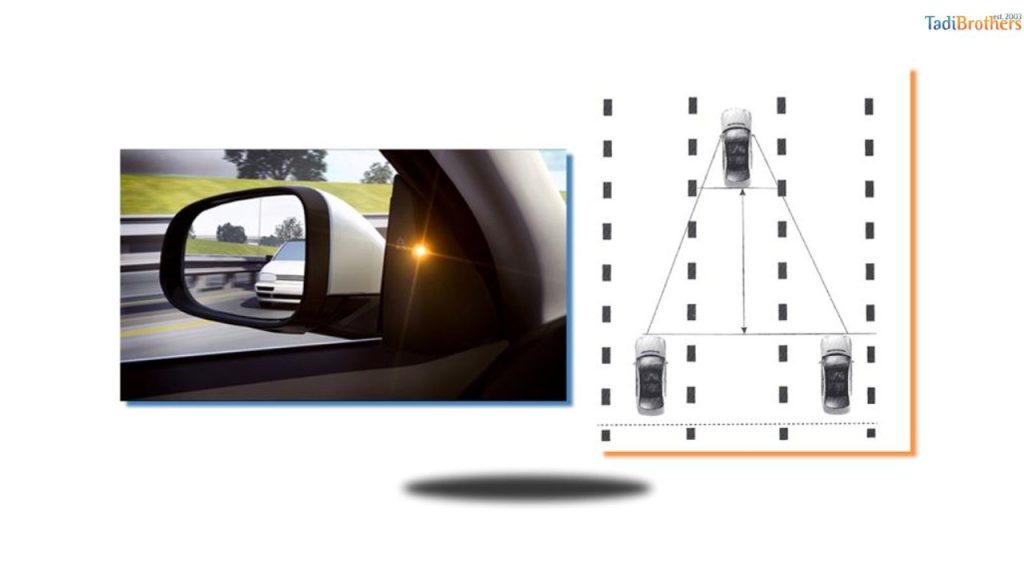In modern driving, blind spots are areas around a vehicle that cannot be directly observed by the driver through standard mirrors. These zones pose significant risks, as vehicles, motorcycles, bicycles, or pedestrians occupying these spaces may remain unseen until it is too late.
In most cases, these blind spots can be identified by looking at the rear-quarter panels and slightly behind the vehicle’s side mirrors on both the driver’s and passenger’s sides.
Use the Blind Spot Detection System to prevent collisions and for keeping road safety.
What Are Blind Spots in Driving?

A blind spot is an area around a vehicle the driver cannot see using mirrors. Other vehicles, motorcycles, or bicycles can hide in these areas without warning. Blind spots usually appear on the driver’s side, passenger side, and rear of the car.
Why Blind Spot Awareness Matters
If you’re not looking out for blind spots, then chances are you’re risking your life and the lives of people around you. Which can lead to accidents on highways or city streets.
Understanding blind spots helps drivers change lanes safely and avoid collisions. Every driver must remain alert to blind spots at all times on the road.
Key Points to Remember:
- Driver-side blind spots are smaller but still dangerous during lane changes.
- Passenger-side blind spots are larger and harder to monitor in heavy traffic.
- Rear blind spots exist behind vehicles, especially tall SUVs and trucks.
- Always stay alert and check blind spots before making lane changes.
How Technology Helps Detect Blind Spots

Modern cars use blind spot detection systems (BSD) to alert drivers of danger. Sensors and cameras detect vehicles entering blind zones and send clear warnings. Alerts include beeps, flashing lights, or vibrations, drawing immediate driver attention.
Manual Techniques to Reduce Blind Spot Risks
Drivers should always perform a quick over-the-shoulder check before every lane change. Adjusting side mirrors slightly outward reduces hidden areas around the vehicle. Checking mirrors frequently ensures no vehicle remains unseen in blind zones.
Blind Spots in Different Vehicle Types
Each vehicle has a different way to find out blind spots. For instance, large trucks and buses have wider blind zones than smaller cars.
Motorcycles and bicycles are harder to spot since they can be very fast and narrow. You should know your vehicle’s size; that way it helps adapt driving strategies for safer lane changes.
Environmental Factors That Affect Blind Spots
Weather conditions like rain, fog, or glare make blind spots much harder to detect. Smudged or dirty mirrors and windows reduce visibility and increase the risk of collisions. Drivers should increase following distance and remain extra cautious in all poor conditions to maintain safety.
Best Practices to Stay Safe Around Blind Spots
- Always adjust mirrors to minimize hidden zones around your vehicle.
- Perform shoulder checks every time before merging or changing lanes.
- Rely on detection technology but maintain full driver attention at all times.
- Avoid lingering in other vehicles’ blind spots during traffic or on highways.
- Anticipate other drivers’ lane changes to reduce unexpected incidents effectively.
Conclusion
If you’re a regular driver, then you need to have an understanding of blind spots while driving. While driving, you should always use your mirrors correctly, and performing shoulder checks keeps vehicles visible and prevents accidents.
Combining careful driving with modern detection systems ensures safer journeys for everyone. Consistent attention to blind spots protects drivers, passengers, and other road users effectively.
